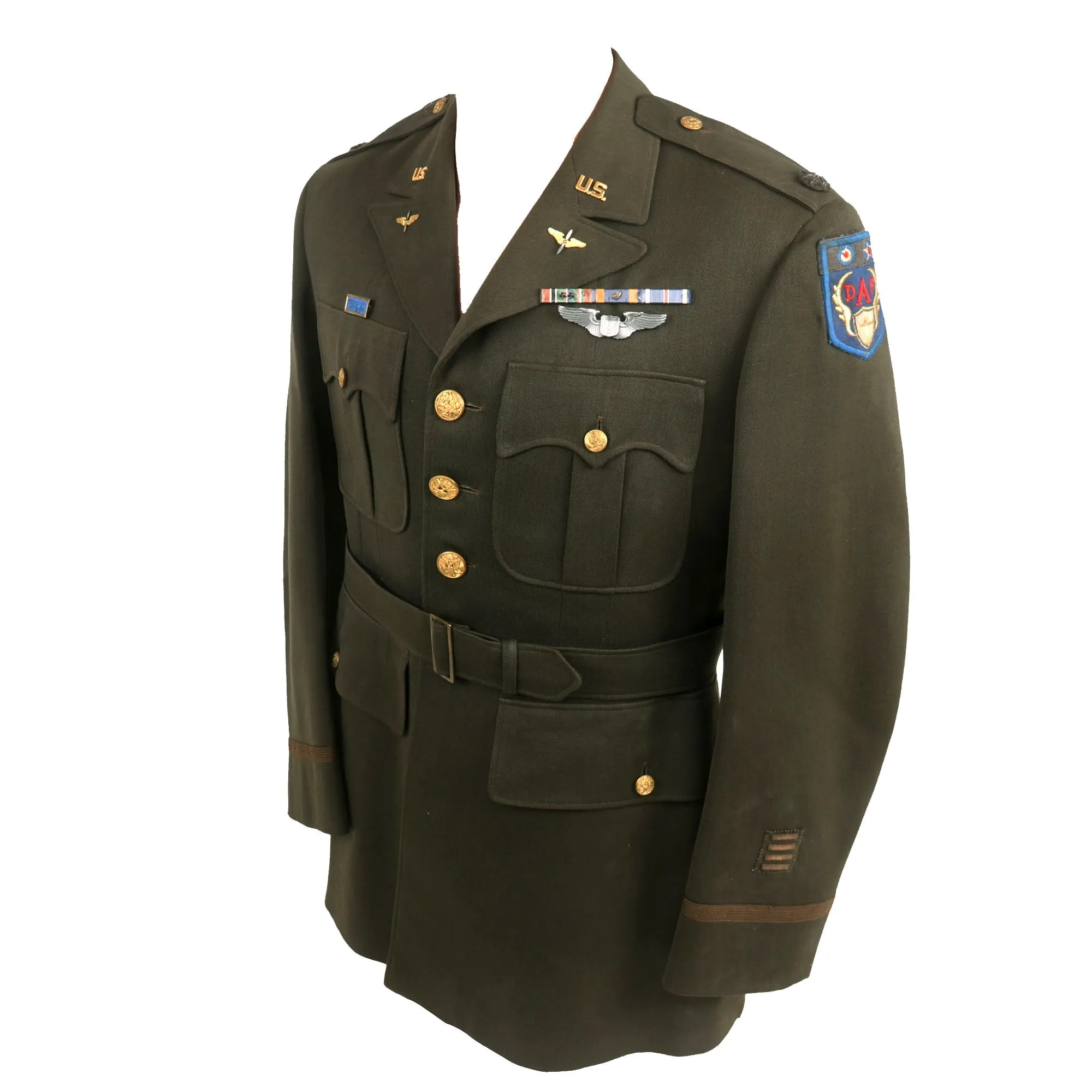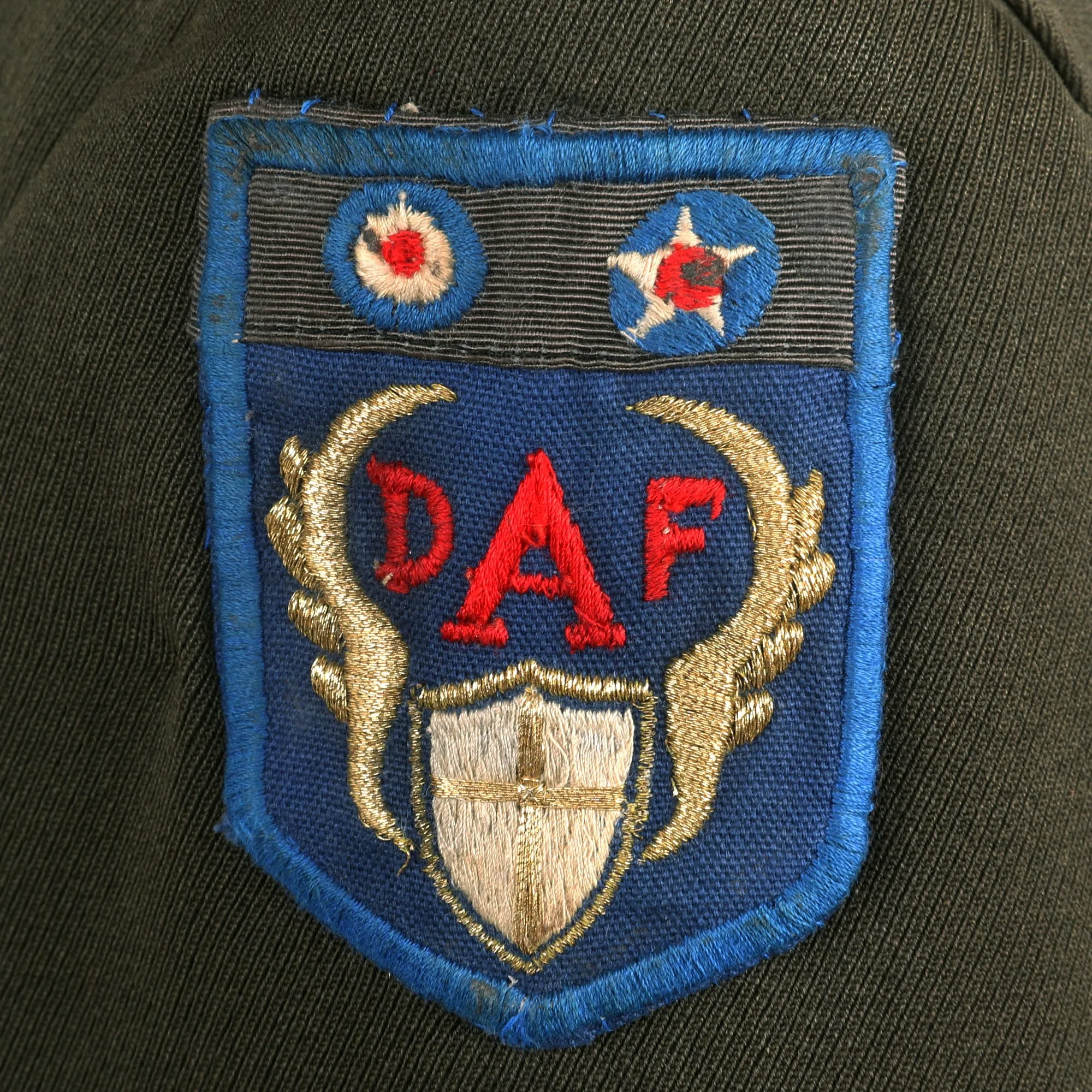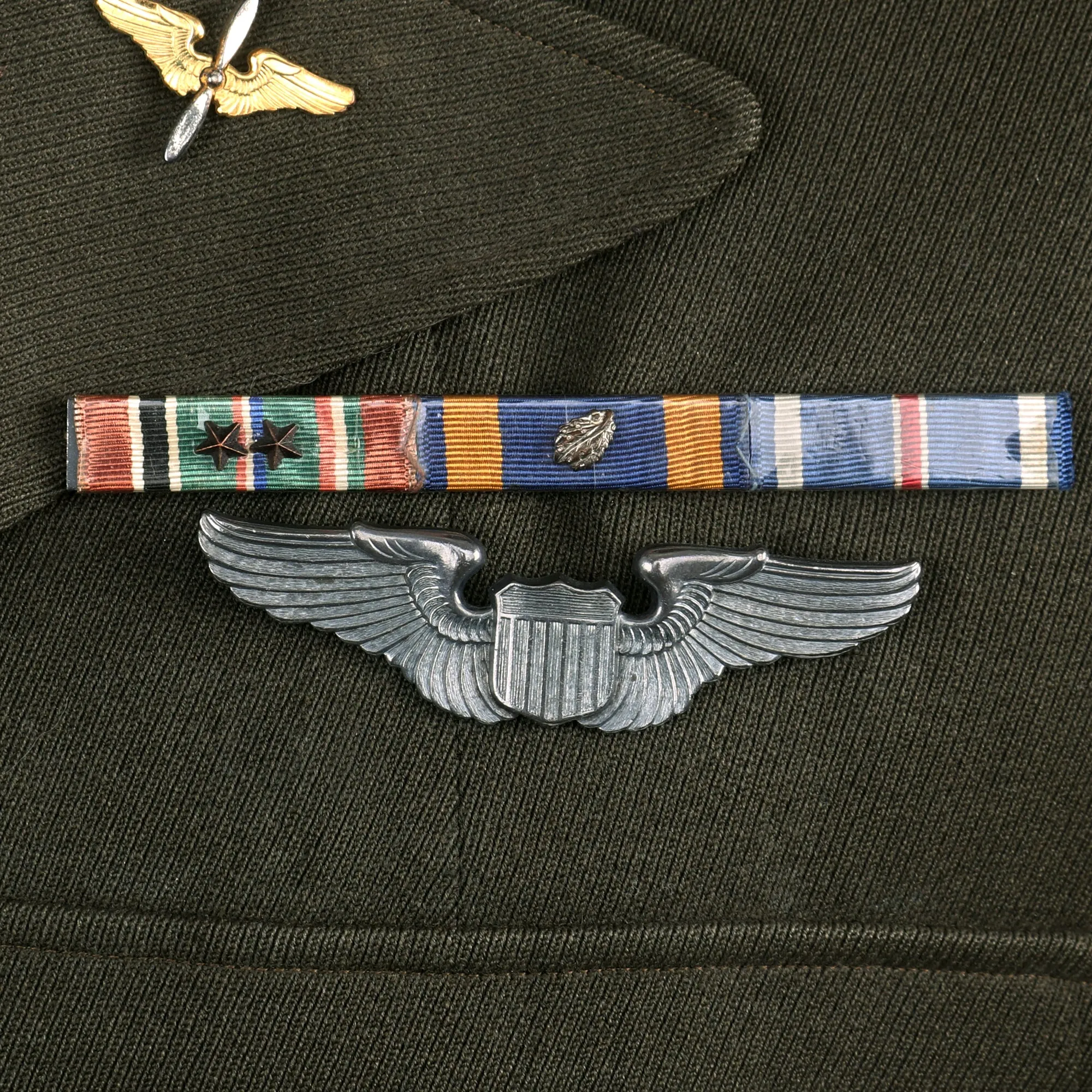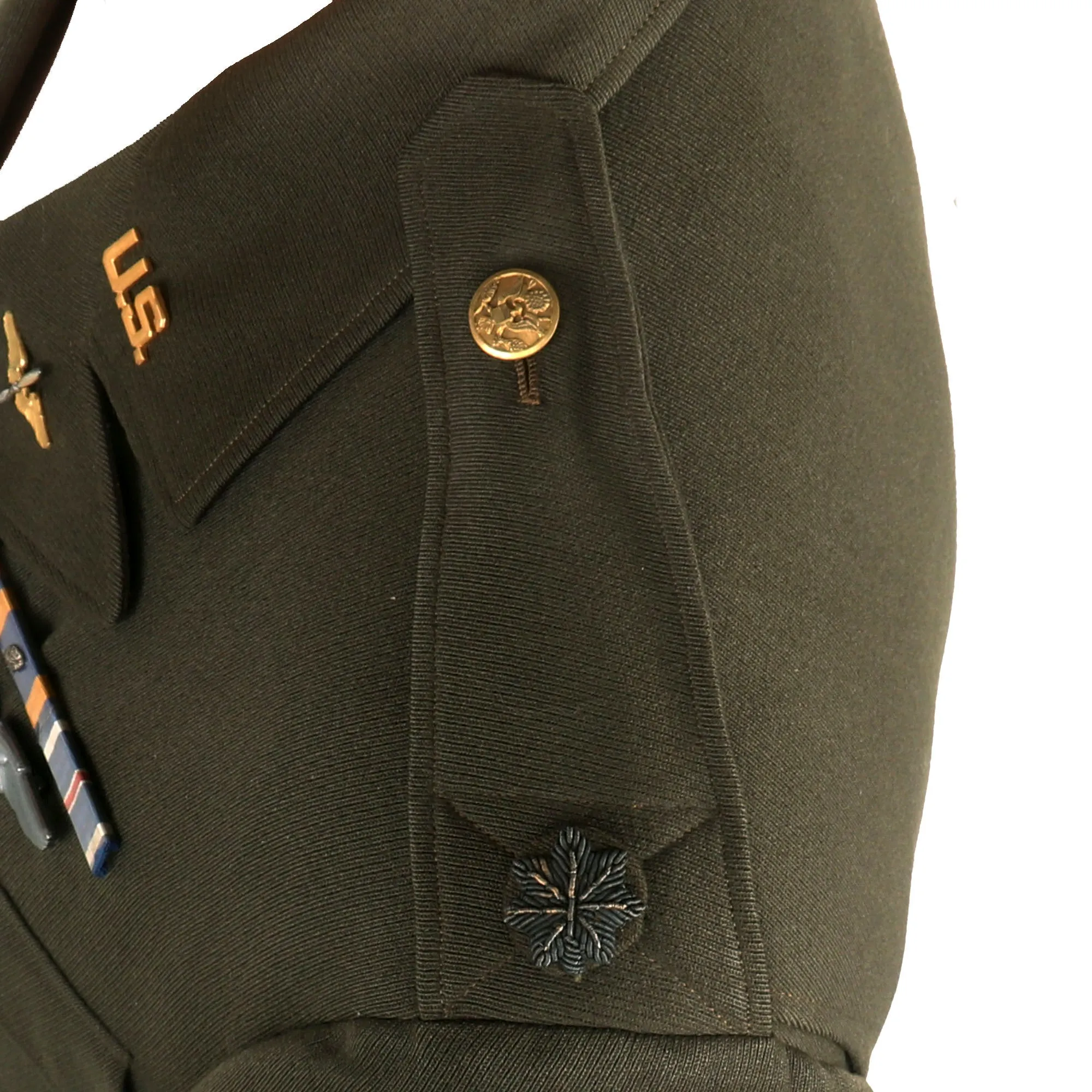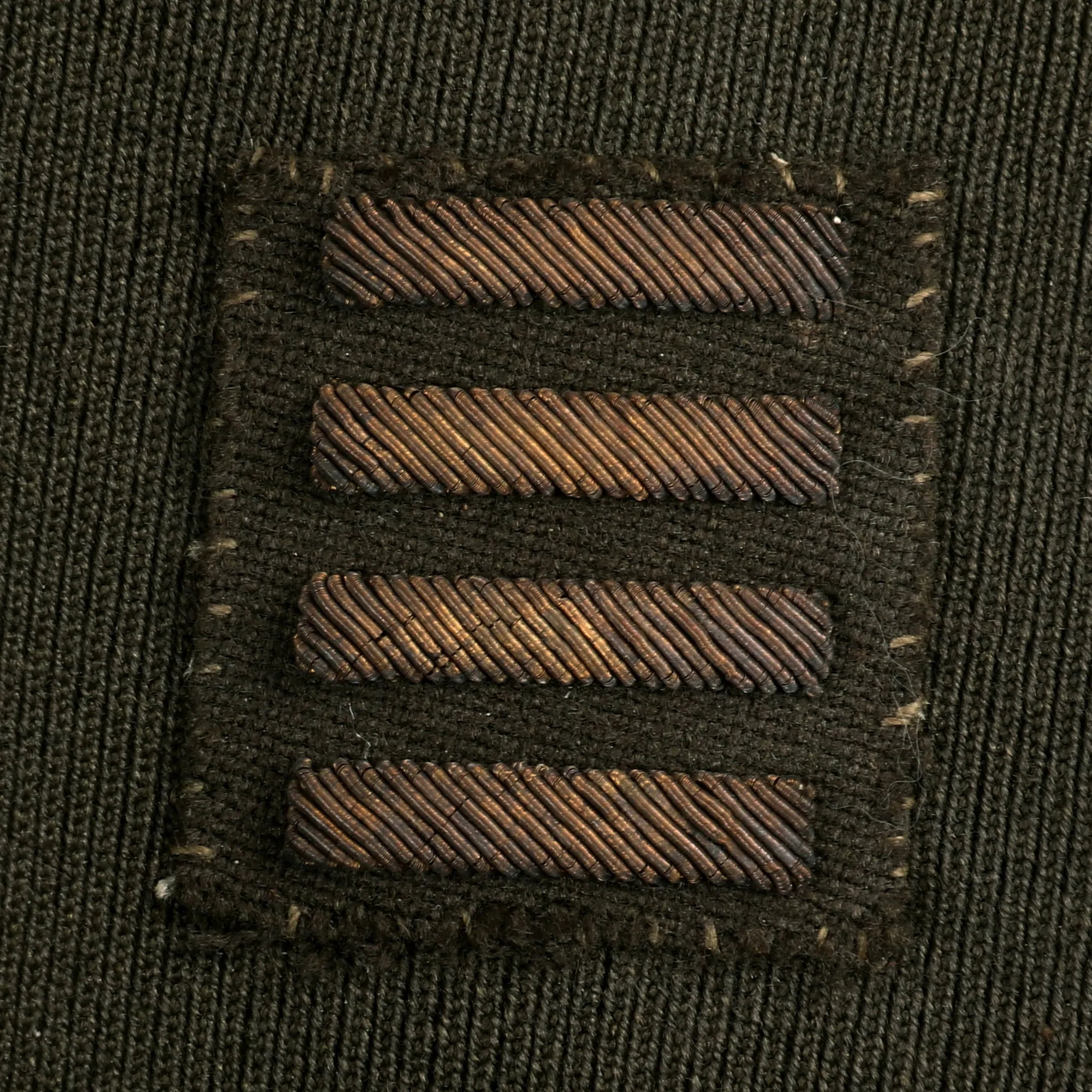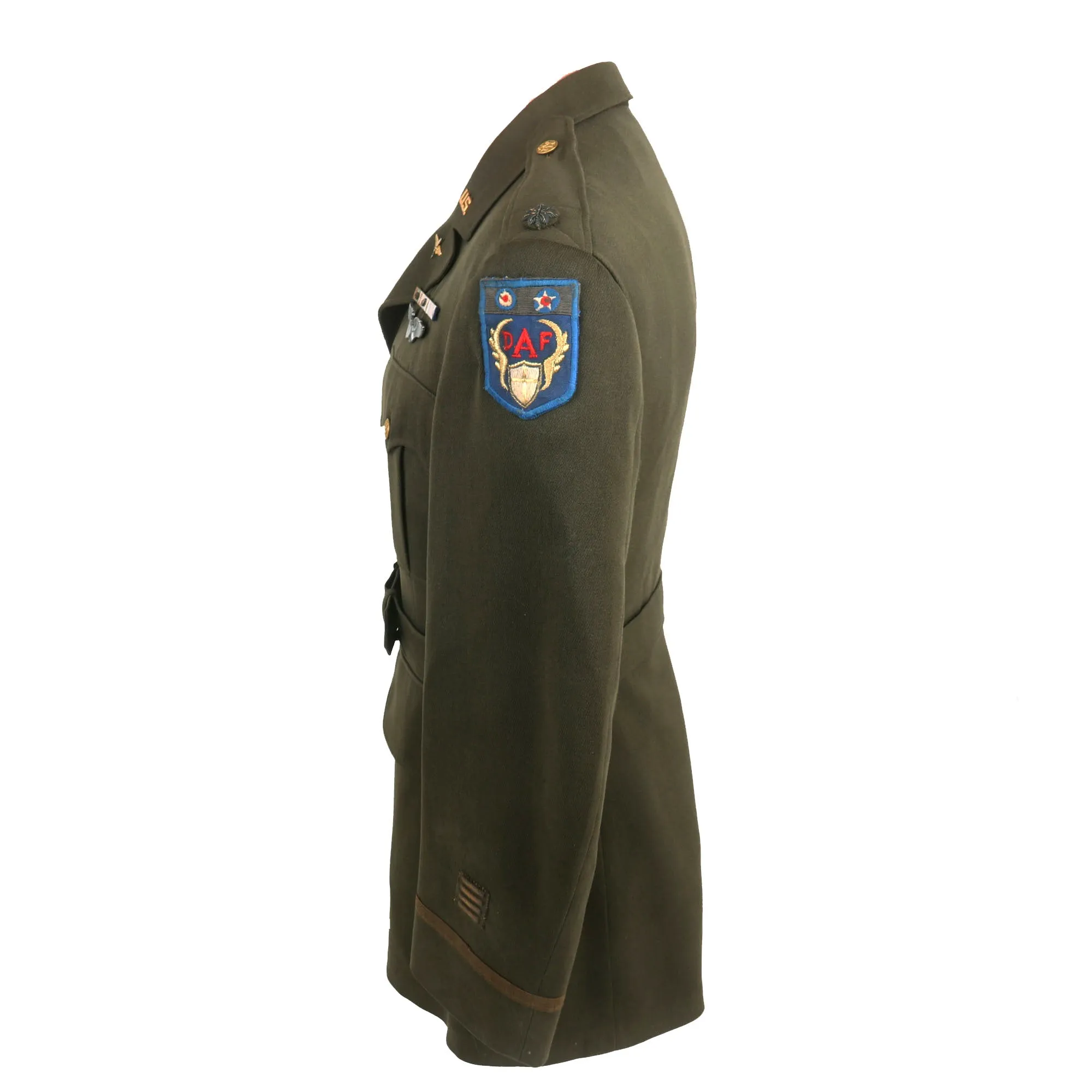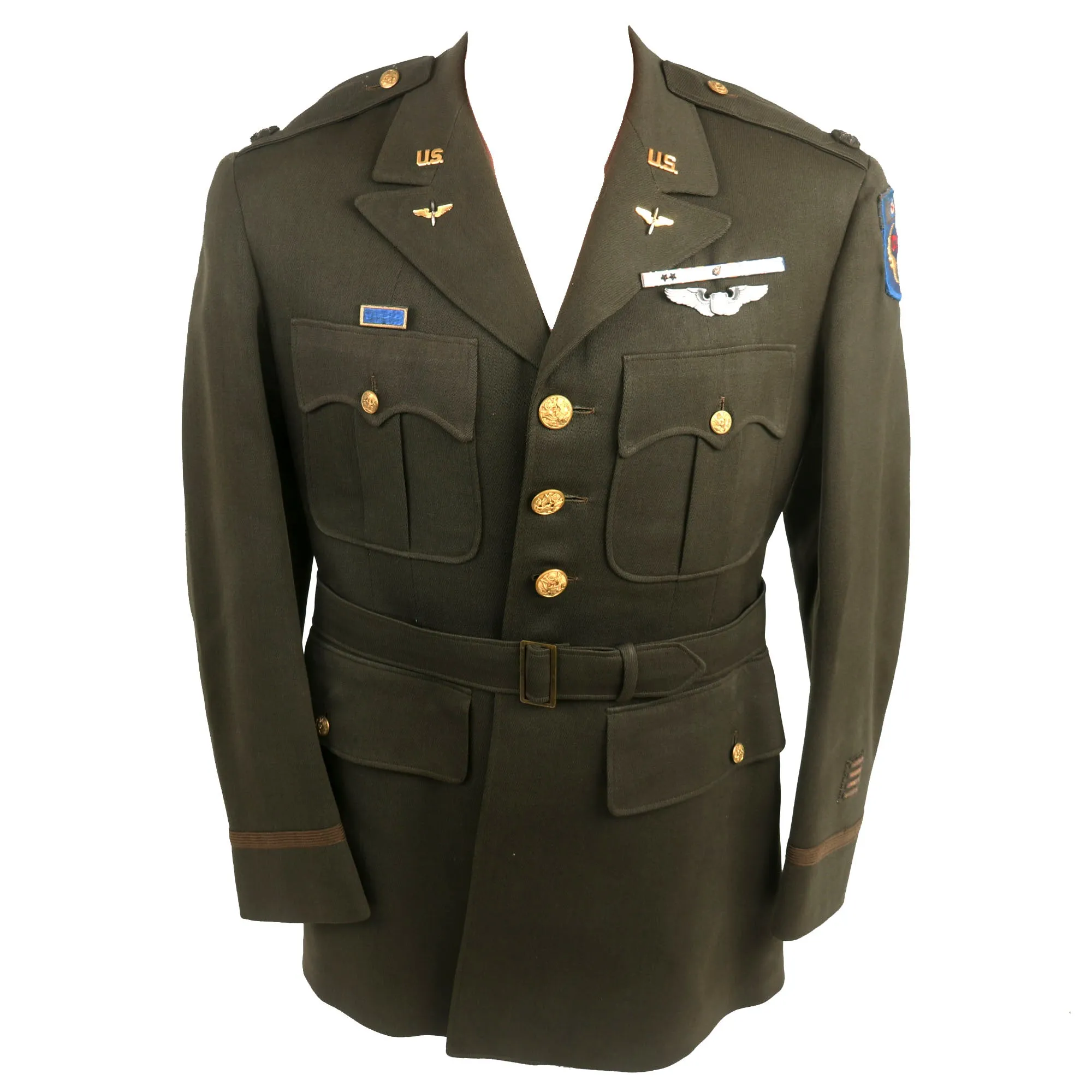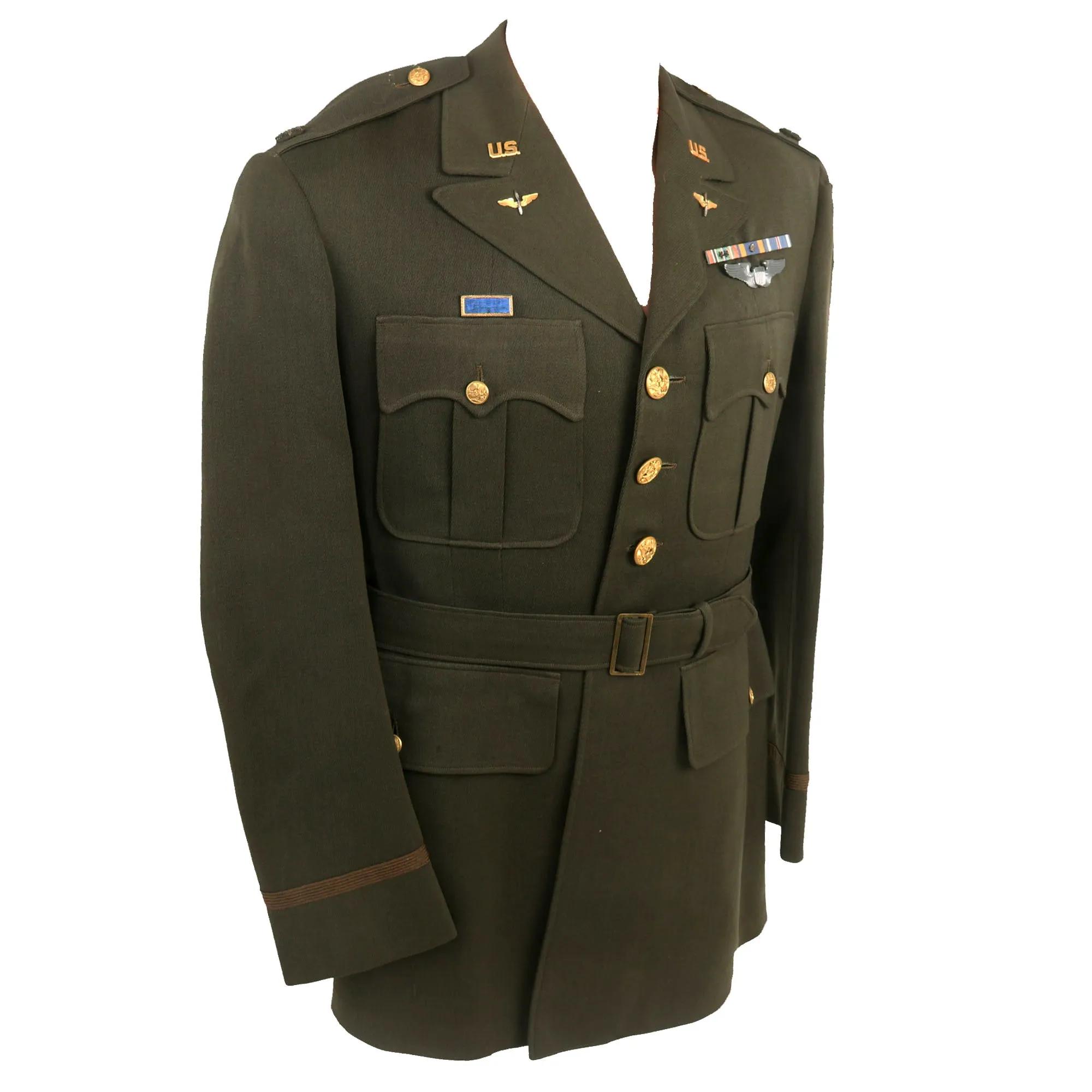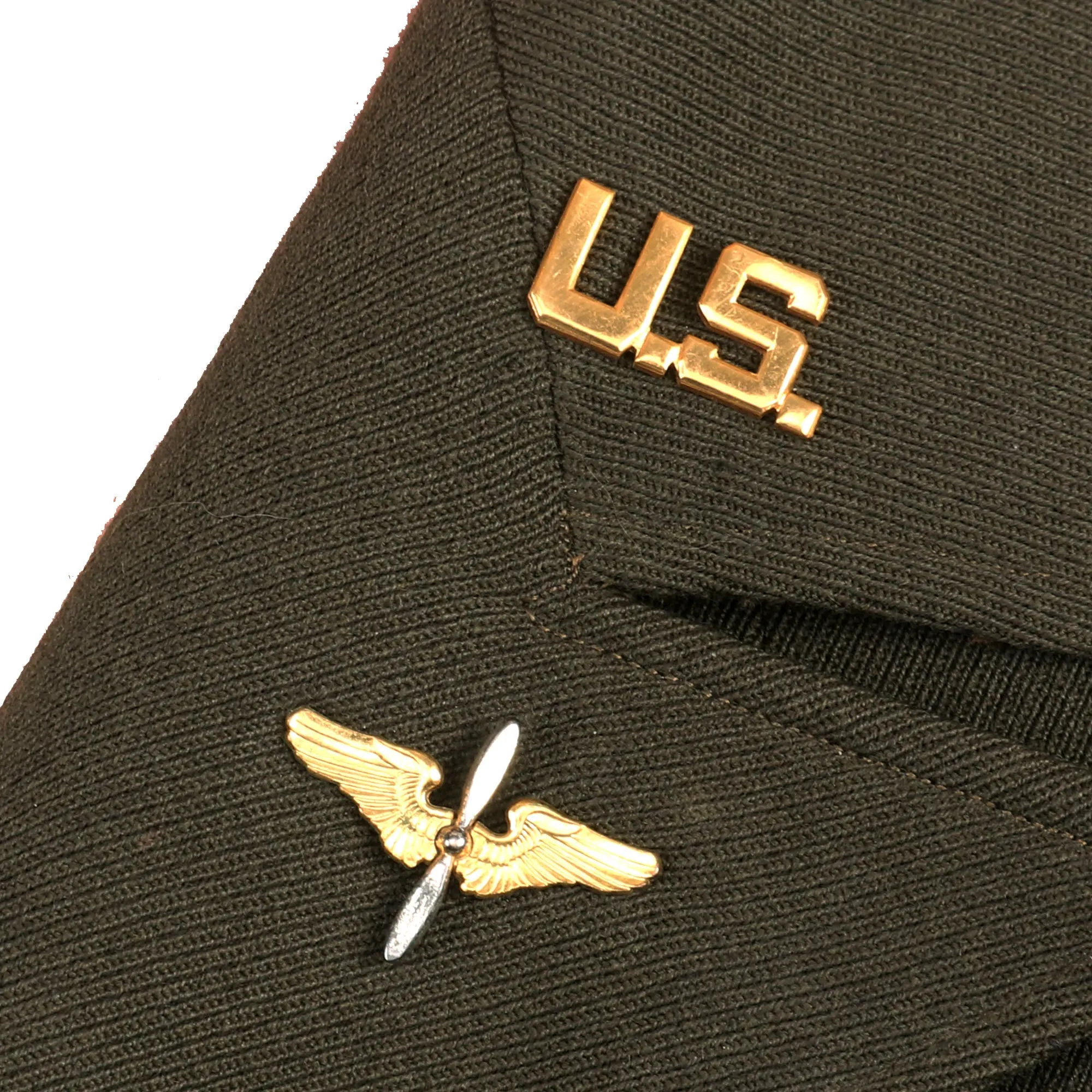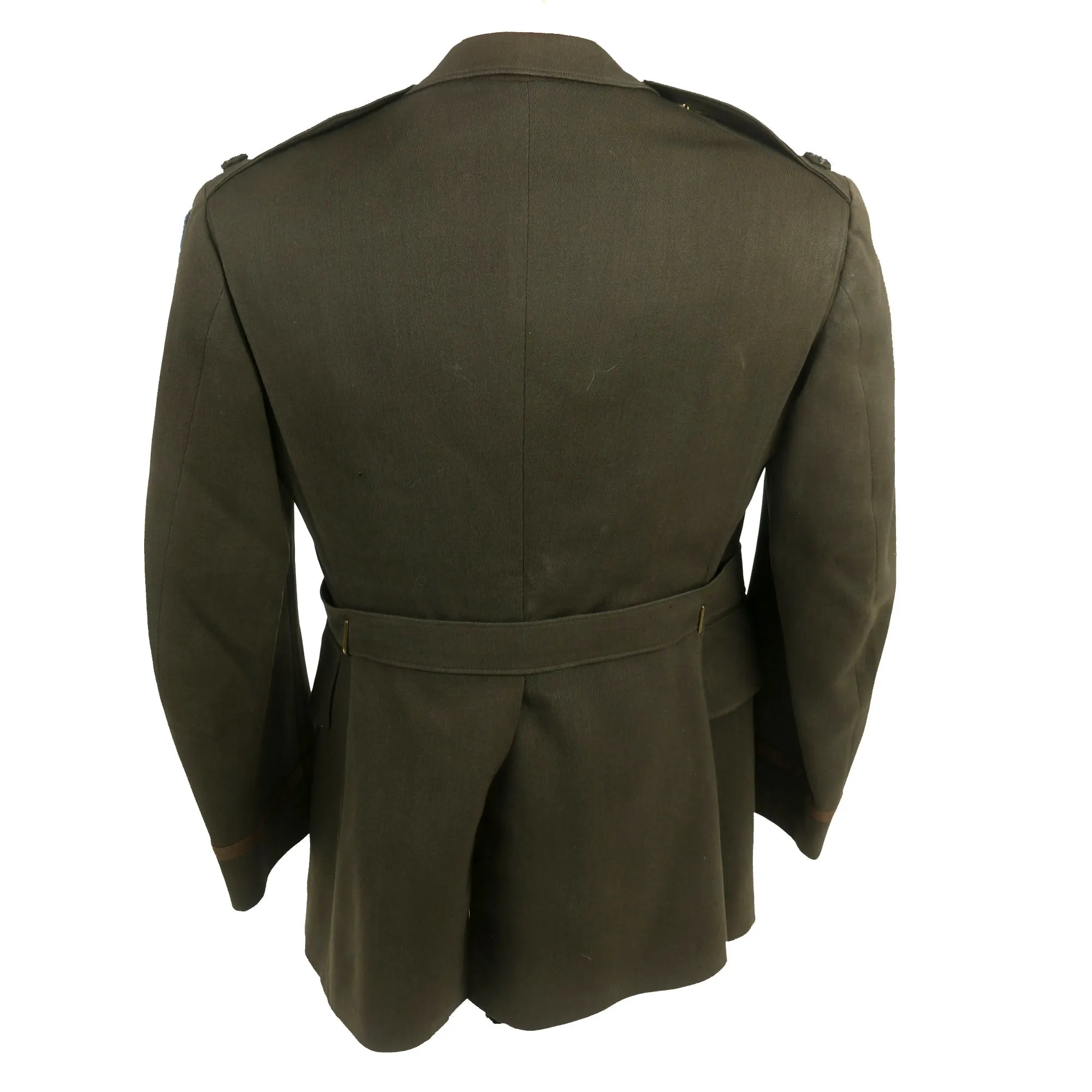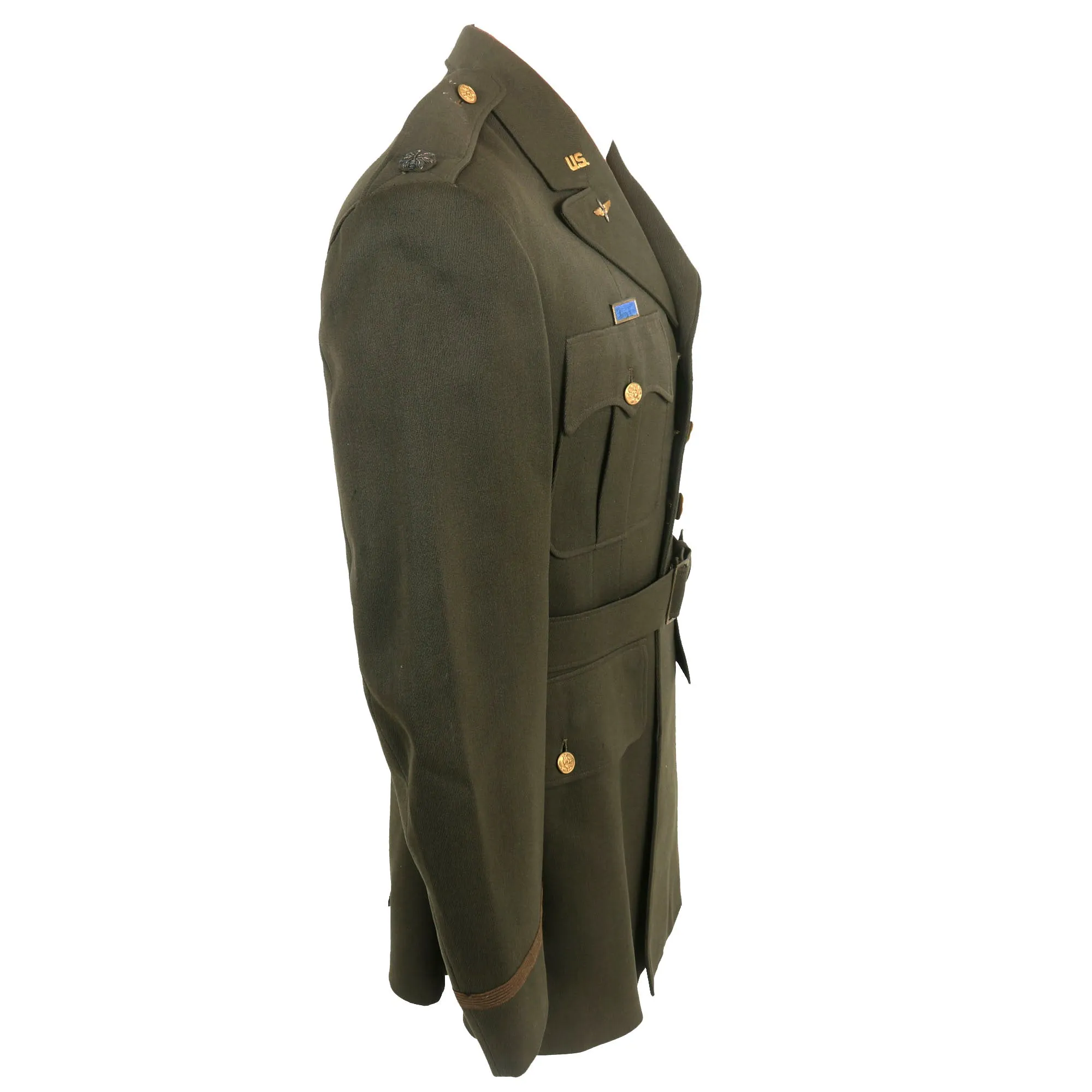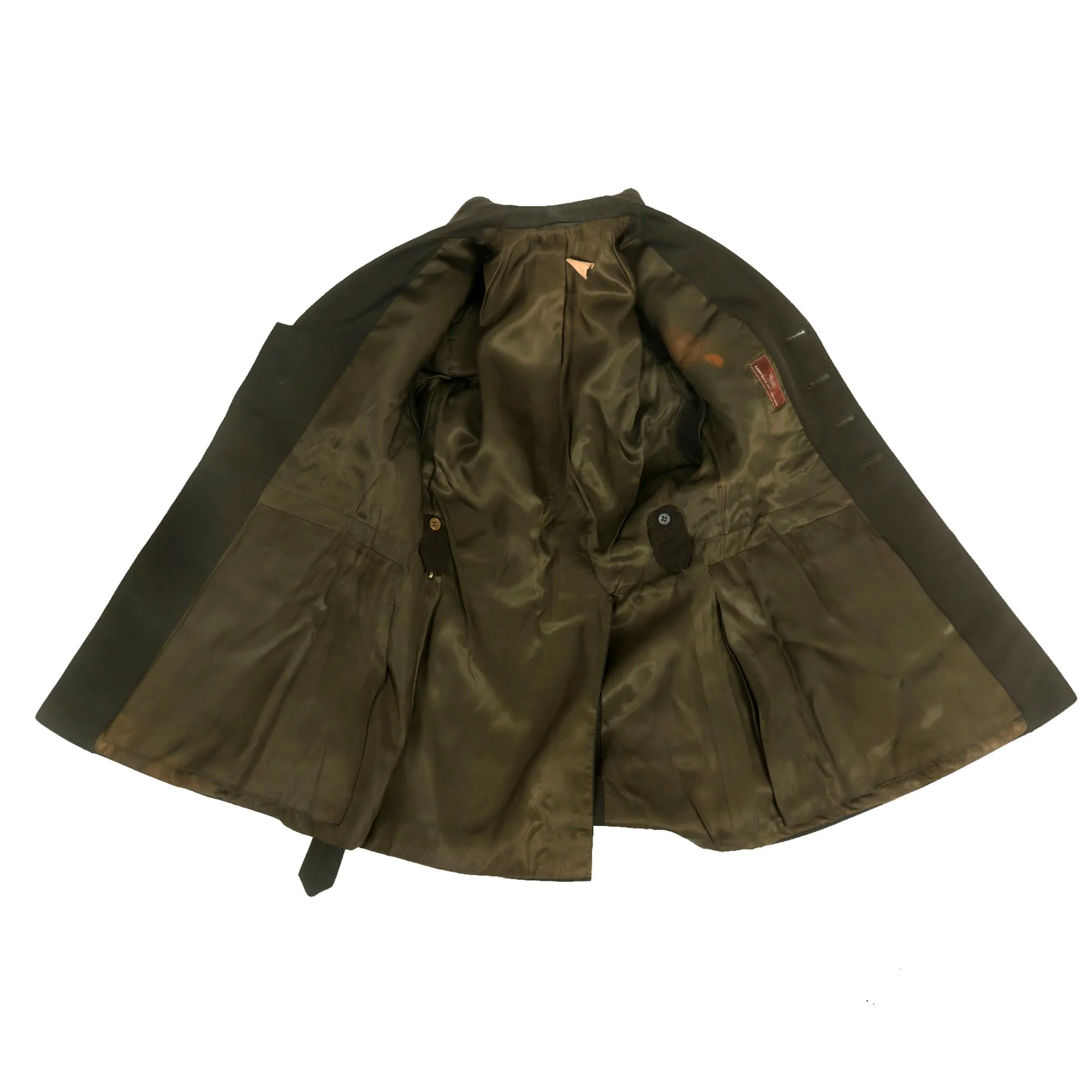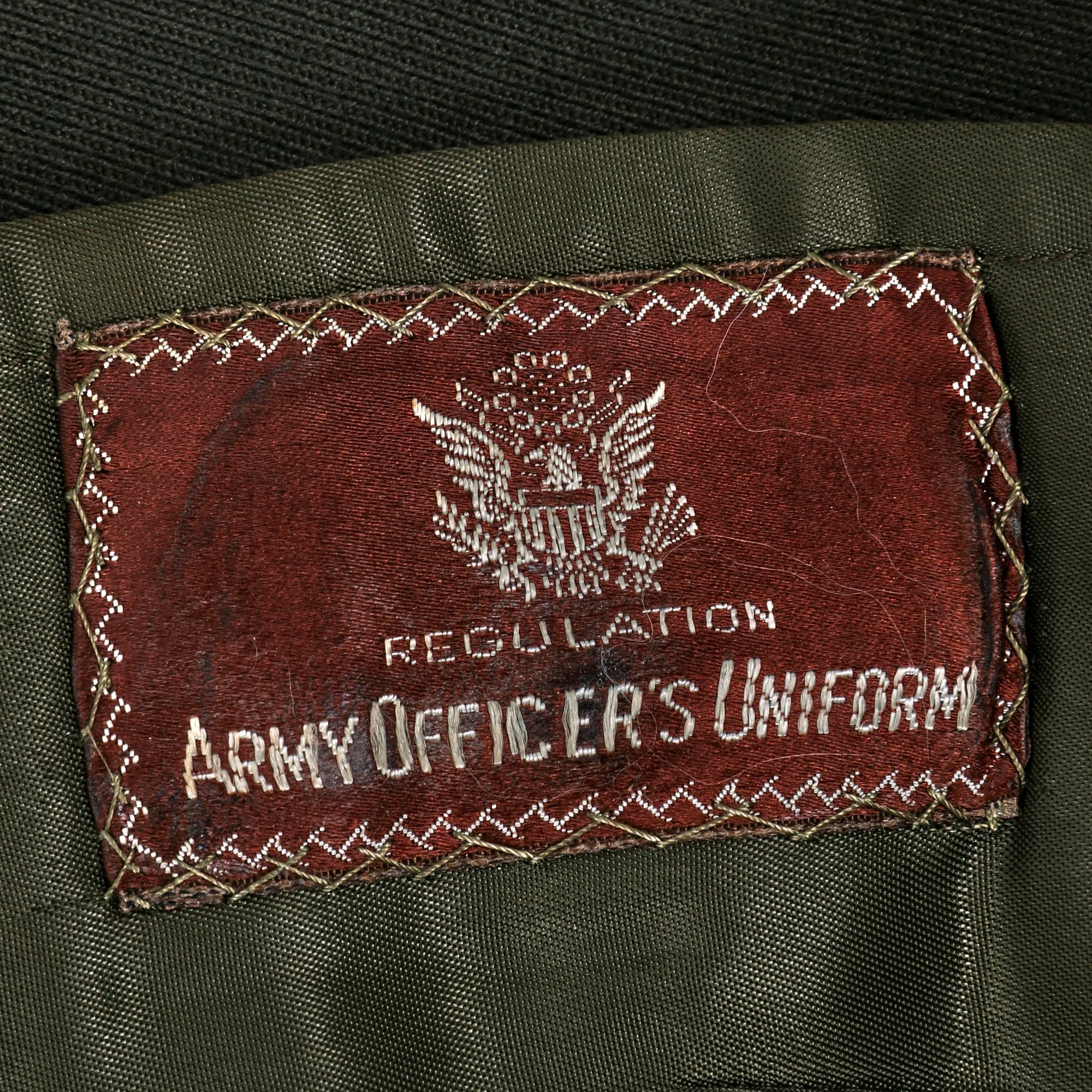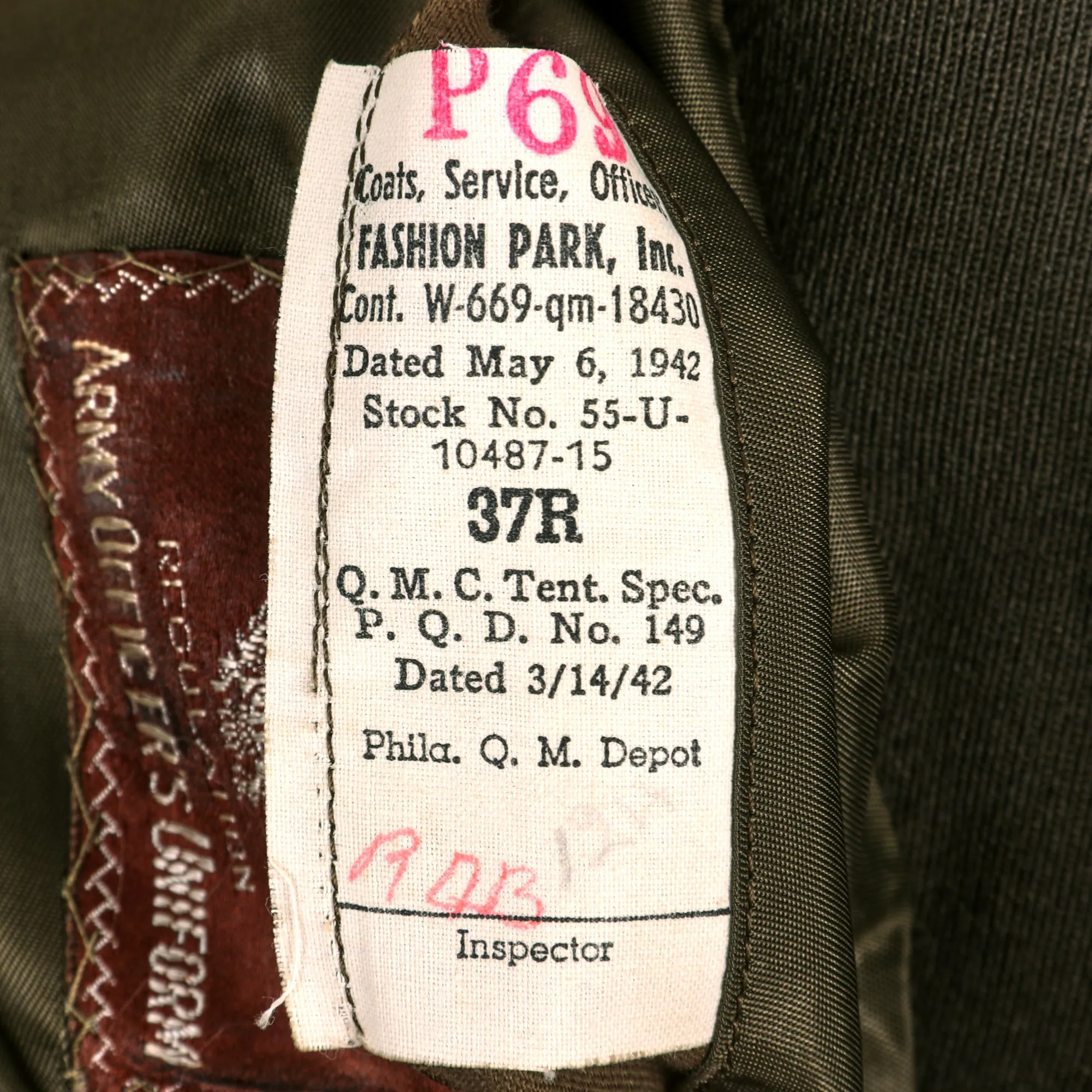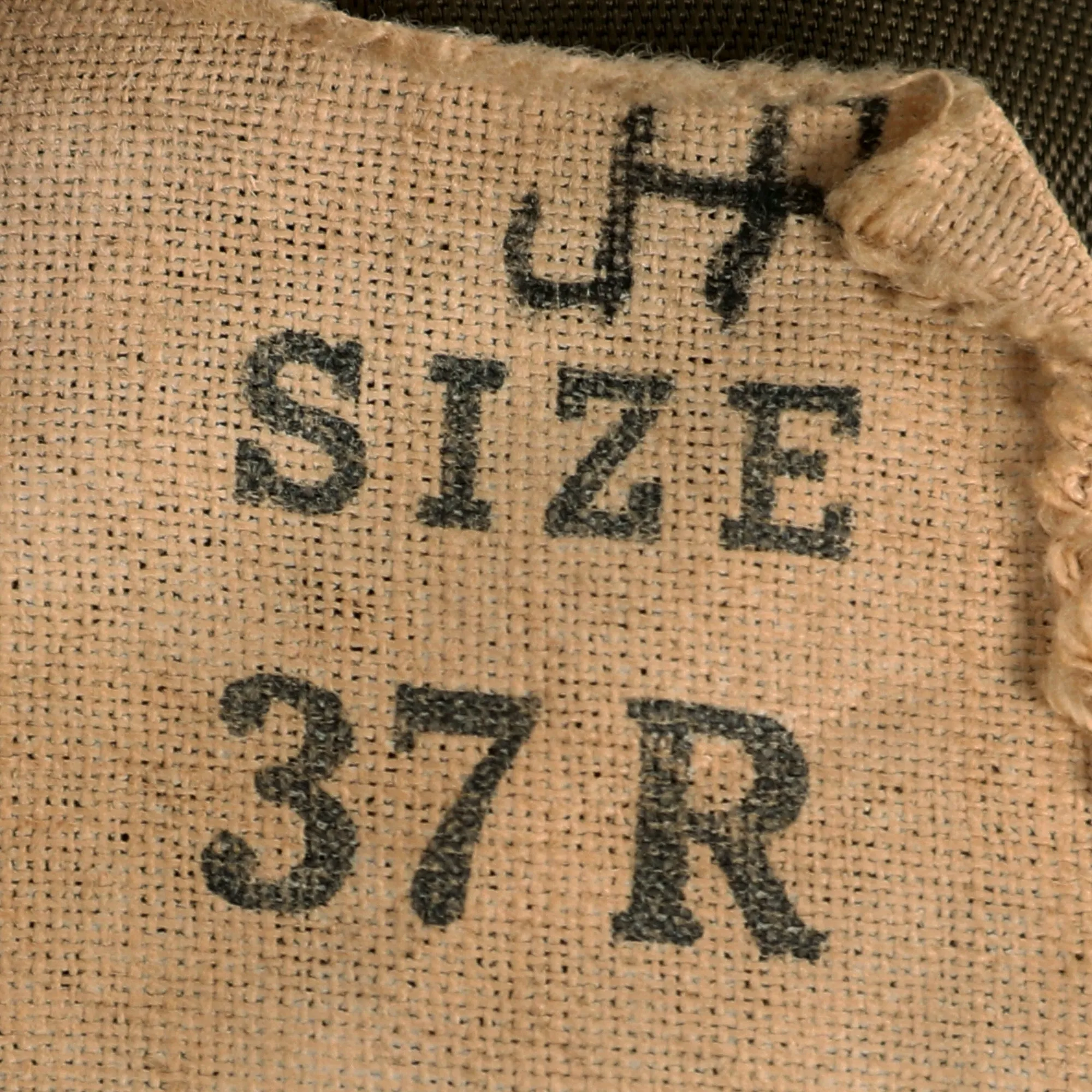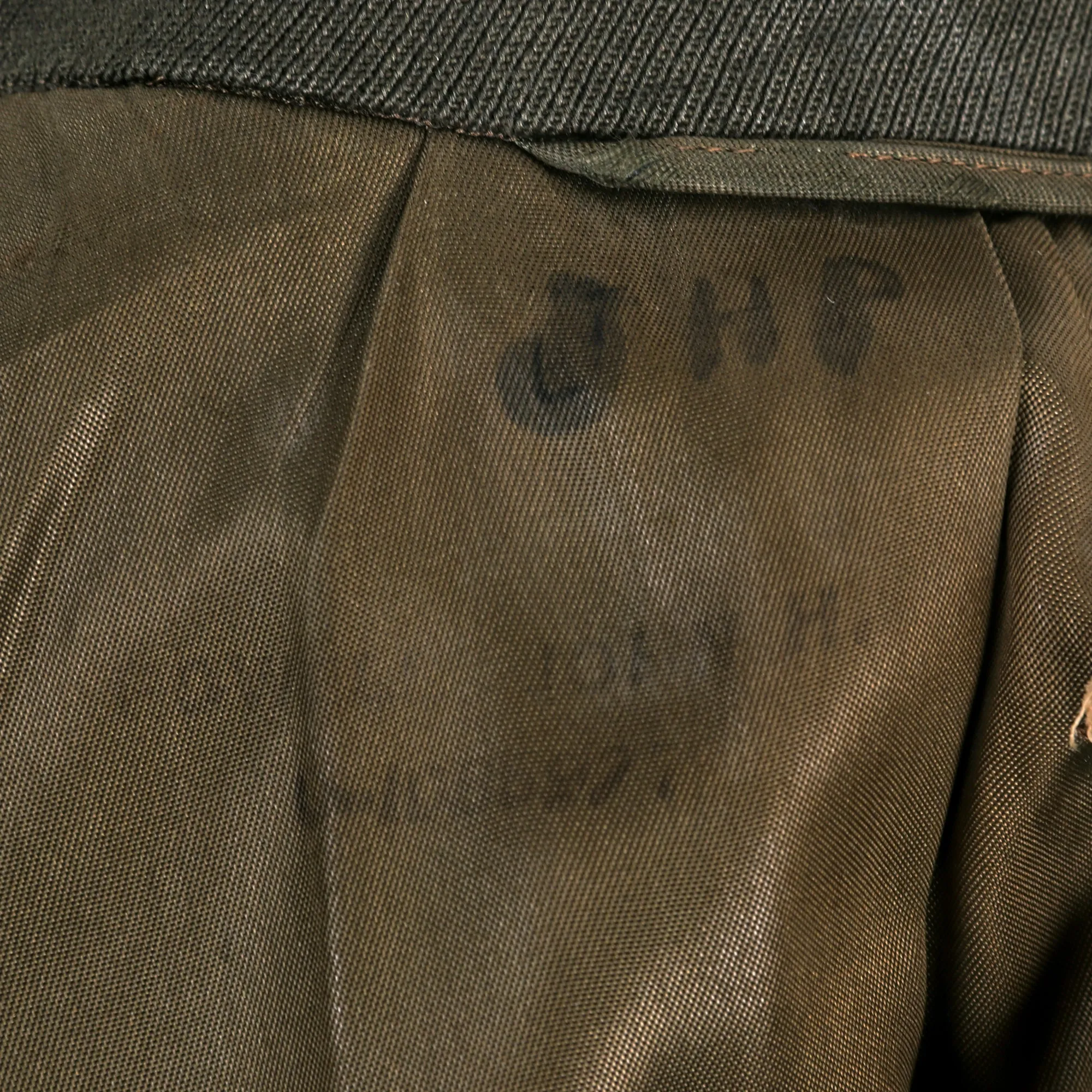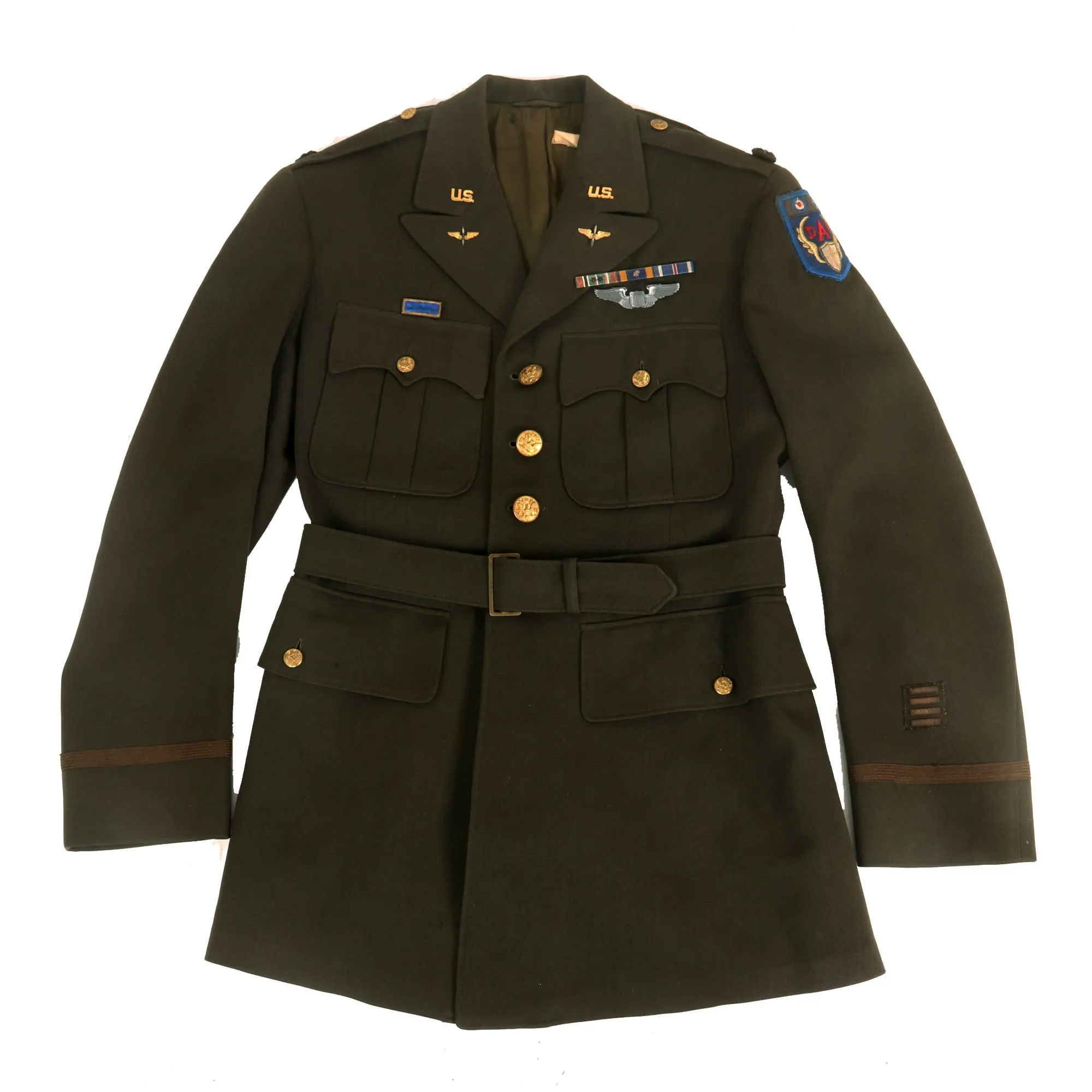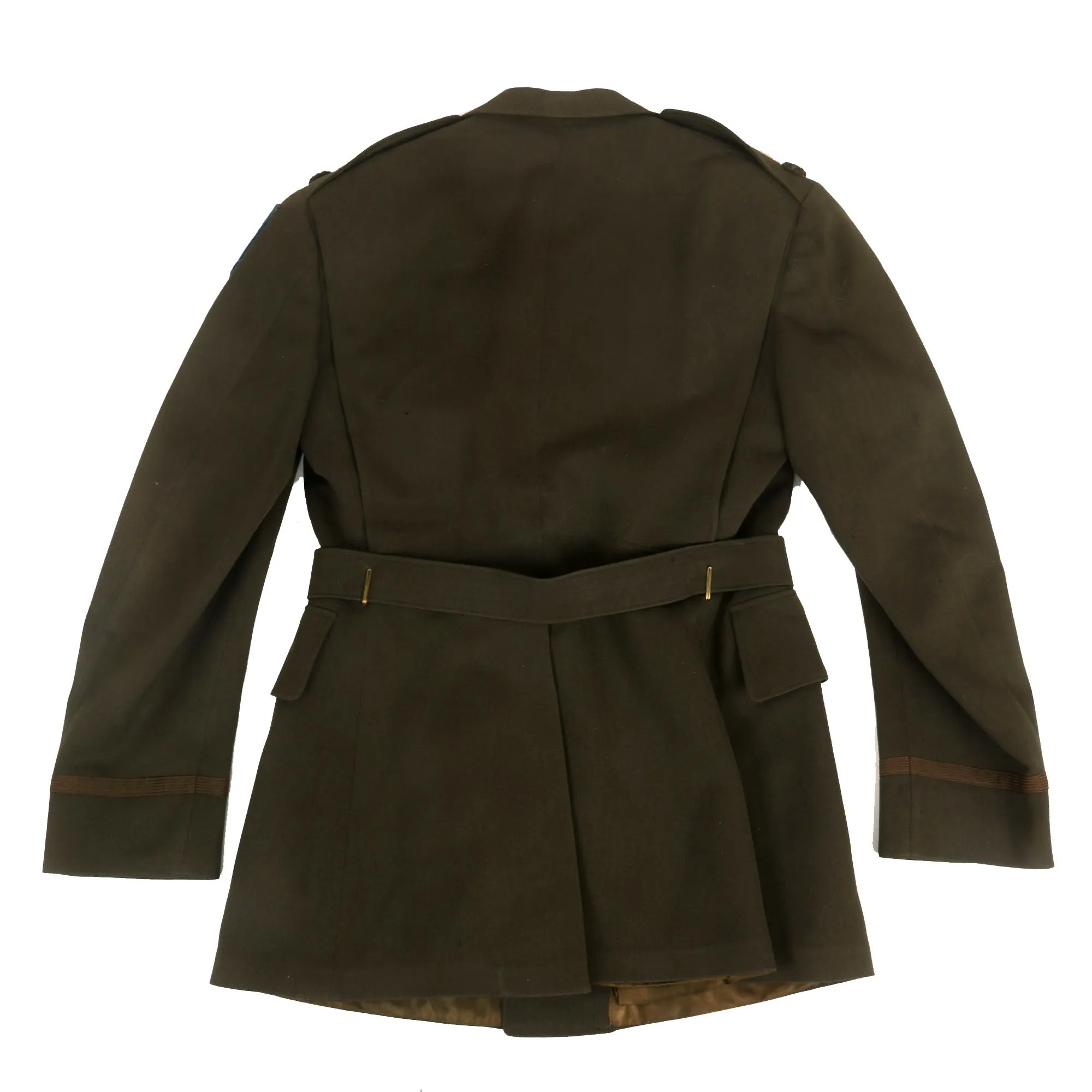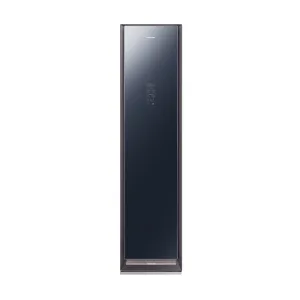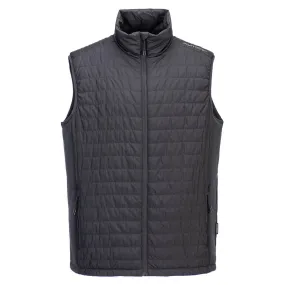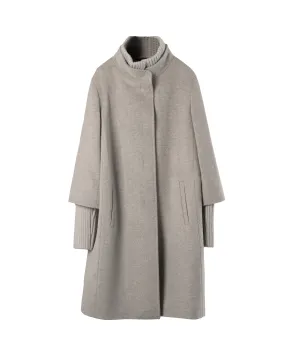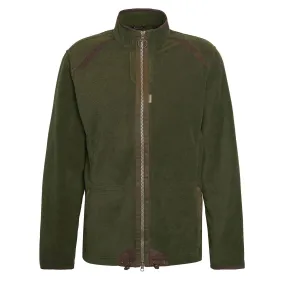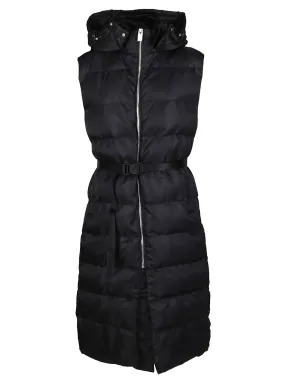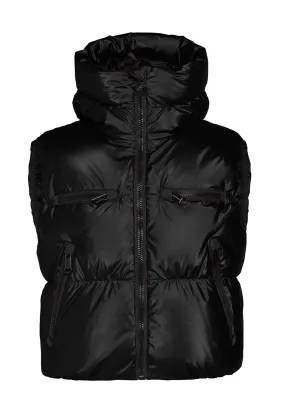Original Item: Only One Available. This is a wonderful example of a Desert Air Force American Observer’s Officer’s Class A uniform coat. This is the first and one of the best examples we have seen! While the Desert Air Force was predominately made up of British RAF members, from July 1942, the United States Army Middle East Air Force (USAMEAF, Major-General Lewis H. Brereton) attached USAAF personnel from the 57th Fighter Group and 12th Bombardment Group to DAF fighter and bomber units, as "observers". The interior of the jacket does have a name and serial number present. Unfortunately the writing has almost completely faded away, but the name present does appear to be John H. Powers.
The male officer's winter service uniform in 1941 consisted of a four-button, four-pocket coat of finer wool fabric in olive drab shade no. 51 (OD 51), a very dark olive green with brownish hue. The coat was worn with a russet brown leather Sam Browne belt until 1942 when the leather belt was replaced by a cloth belt of matching fabric, which is unfortunately not present. Officers could wear trousers matching the color and fabric of the coat, or optionally they were allowed trousers of a contrasting pinkish pale taupe, officially called "drab shade no. 54", of the same material as the coat. The combination was commonly called "pinks and greens". Officers were also authorized to use the more durable OD 33 enlisted uniforms, except for the enlisted men's four pocket service coat, as long as they were not mixed with OD 51 or taupe clothing.
Devices Featured On Uniform
- ‘DAF’ Patch (Left Shoulder): US-made World War II Desert Air Force (DAF) USAAF & RAF Combined Operation Shoulder Patch. The patch depicts a white and yellow shield with yellow wings, surrounding the Letters "DAF". On the top part of the patch are both the RAF and USAAF roundels.
- x2 Silver Bullion Lieutenant Colonel Oak Leaves: They are both still firmly attached in place and display evident signs of tarnishing but are without material loss.
- x2 “U.S.” Designators On Collar
- x2 Officer’s “Winged Prop” insignia on Lapel
- Presidential Unit Citation on Right Breast
- Ribbons Present on Left Chest; EAME W/ (2) Stars, Air Medal (1) Oak Leaf Cluster and Distinguished Flying Cross
- Air Forces Pilot Wings
Aside from insignia tarnishing and light staining, the uniform coat is presented very well. The belt is still present and has a piece of velcro on the back with another piece present on the lower button. This was done to keep the belt in place and given how velcro wasn’t widely used until the post war era, this was more than likely done for display purposes.
Overall this is an excellent uniform packed with a lot of research potential. Comes more than ready for further research and display.
Approximate Measurements:
Collar to shoulder: 9.5"
Shoulder to sleeve: 25.5”
Shoulder to shoulder: 17”
Chest width: 19.5"
Waist width: 17"
Hip width: 21"
Front length: 32"
Desert Air Force
The Desert Air Force (DAF), also known chronologically as Air Headquarters Western Desert, Air Headquarters Libya, the Western Desert Air Force, and the First Tactical Air Force (1TAF), was an Allied tactical air force created from No. 204 Group RAF under RAF Middle East Command in North Africa in 1941 to provide close air support to the British Eighth Army against Axis forces. Throughout the Second World War, the DAF was made up of squadrons from the Royal Air Force (RAF), the South African Air Force (SAAF), the Royal Australian Air Force (RAAF), the United States Army Air Forces (USAAF) and other Allied air forces.
In October 1941, the Western Desert Air Forces had 16 squadrons of aircraft (nine fighter, six medium bomber and one tactical reconnaissance) and fielded approximately 1,000 combat aircraft by late 1941. By the time of the Second Battle of El Alamein, the DAF fielded 29 squadrons (including nine South African and three USAAF units) flying Boston, Baltimore and Mitchell medium bombers; Hurricane, Kittyhawk, Tomahawk, Warhawk and Spitfire fighters and fighter-bombers. There were over 1,500 combat aircraft, more than double the number of aircraft the Axis could field.




